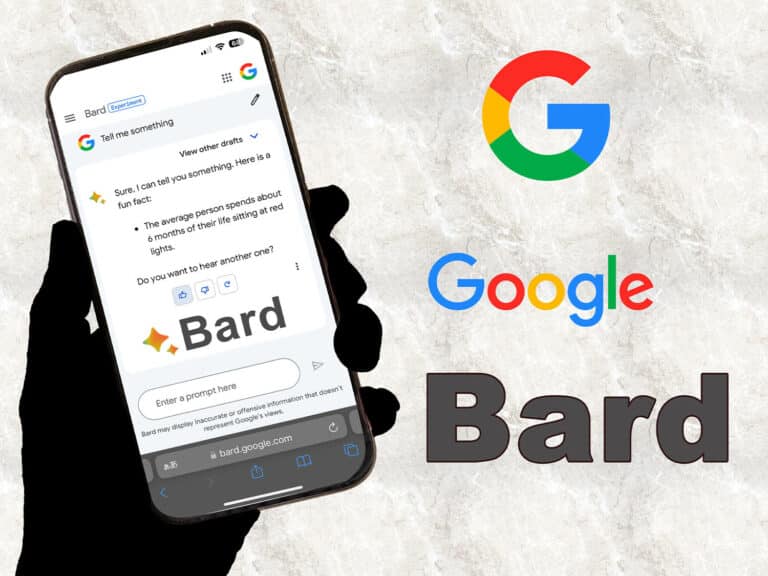Your WordPress website isn’t ranking well on Google and other search engines.
Or maybe you’re getting a small amount of traffic to your site, but not enough to claim that your SEO strategy is working as well as it could.
With Google constantly evolving, we understand the challenge of keeping up with SEO best practices. This guide gives you what you need for a successful SEO setup for WordPress.
What Is SEO in WordPress?
SEO stands for Search Engine Optimization. Whether on WordPress or a different platform, website owners use SEO to help Google understand what their page is about. The more Google understands and sees value in your site, the better your chances of it ranking in a SERP (search engine results page).
Is WordPress Good for SEO?
SEO is SEO, no matter what platform you use — WordPress SEO isn’t magically different.
Google is looking at the same ranking factors on a WordPress site as it’s looking on a Squarespace site to determine whether you should rank over your competitors.
Some of those factors are:
- Quality of content
- URL structure
- Title tags
- Meta descriptions
- And so on
How Do I SEO My WordPress Site?
The key points of technical SEO for WordPress, and any other site, are:
- Site Health
- Visibility
- URL Structure
- SEO-friendly WordPress Theme
Let’s dive into each of these.
Check Your Site’s Health
Before you begin making adjustments to your site, you should figure out where you are now. You might ask yourself questions like “What hosting plan do I have?” and “What software and hardware are used to run my site?”
To see your site’s health status, go to Tools > Site Health on the backend of WordPress.
Once here, you can click the arrow on the far right of one of the recommended improvements to expand that section, like this:
Check Your Web Hosting
Based on the requirements that WordPress themselves have set, your hosting plan should include:
- PHP v7.4 or greater
- MySQL v5.6 or greater OR MariaDB v10.1 or greater
- HTTPS support
Apache or Nginx are highly recommended but not required as long as your site is running PHP and MySQL.
You can check Site Health to see more details about your server setup (see below).
Upgrade Your PHP
There are many WordPress sites still running outdated versions of PHP.
Why does this matter? Well, not only has WordPress discontinued support for PHP 5.6 and older but continuing to use these older versions can make your site more vulnerable to attacks because they can no longer receive security fixes.
Upgrading to at least PHP 7.3 can:
- Give your site a big speed boost.
- Free up stress on your server by running more efficiently.
- Offer your site better security.
- And more.
But before upgrading, be sure to make a backup of your website. Then, you can usually ask your web hosting’s support team to make the PHP upgrade to your live site for you.
Looking for a way to track changes like this? SEOReseller can help with that. Click here to contact one of our in-house WordPress SEO consultants.
Use SSL and HTTPS
Gone are the days of opting out of having an SSL certificate — getting an HTTPS URL along with a padlock icon in the browser search bar, like this:
Search engines might penalize your site if you don’t have a valid SSL certificate and setup. If that’s not incentive enough, SSL is used to prevent third parties from intercepting web requests and other data from your site.
Moving your site from HTTP to HTTPS can temporarily affect your rankings, but once Google has had some time to crawl and index your site and monitor traffic, it can work in favor of your WordPress SEO.
Check Your Visibility Settings
WordPress has an option that can hide your website from search engines, which comes in handy when you’re still working on your site and not quite ready for it to go public.
But this option shouldn’t be used after your site has already been indexed by search engines. Making your site unavailable can confuse Google and hurt your rankings.
If your site isn’t showing up in search results, you need to look to see that this option hasn’t been accidentally checked. To do this, go to Settings > Reading in WordPress.
SEO-Friendly Permalinks: WordPress URL Structure Setup
Your permalink settings will determine the URL structure for both your pages and posts on your WordPress site.
The URL structure is important to SEO because it can either help Google better understand your pages, or it can make all of your pages and posts look like just another piece of content that’s no different than the other pages or posts on your site.
By default, WordPress sets your permalink structure to look something like example.com/?p=123. While this structure technically works, it’s not very SEO-friendly when both users and search engines are trying to understand the relevance of your pages.
A better URL setup for SEO best practices might look like one of the following:
- example.com/post-name/
- example.com/category/post-name/
To change your permalink settings, go to Settings > Permalinks. From there, if you want to go with the first recommendation you can choose the “Post name” option (see below).
For the second URL structure recommendation, choose “Custom Structure” and place your cursor in front of /%postname%/, then click on /%category%/ from the “Available tags”, like this:
Note: If you do change your permalink structure, remember to make sure all URLs are redirected from their old structure to their new structure to avoid any 404 errors.
For example, if a dentist had a page called /teeth-whitening/ and updated it to be /services/teeth-whitening/, then a redirect would need to be made to ensure all users and search engines would be directed to the current URL.
WWW or non-WWW: Does It Affect WordPress SEO?
For WordPress SEO, choosing to have your site show up with or without the “www.” makes minimal difference. Most hosting and servers will automatically redirect requests from the wrong version to the version that you have chosen.
Basically, it’s more of a branding choice than an SEO choice.
Best SEO WordPress Themes
All themes are not created equal. Some have better SEO capabilities built-in, while others require more code and plugins to achieve an overall SEO-friendly site. Here is a list of SEO WordPress themes:
Best SEO Plugin for WordPress: 3 to Consider
Plugins are a necessary part of your WordPress setup, especially if you want to take advantage of all the WordPress SEO tools available to you. Here are three types of plugins to consider:
1. Yoast SEO WordPress Plugin
While there are other similar plugins, Yoast SEO is potentially the top plugin for SEO performance. A free SEO plugin for WordPress, Yoast SEO has many features that are designed to help both users and search engines to get the most out of visiting your website.
When activated, Yoast SEO appears below the block editor when looking at an edit screen for a post or page.
Free Yoast SEO WordPress Features
- Advanced XML sitemaps
- Title and meta description templating
- Automated technical SEO improvements
- Control over site breadcrumbs
- Schema.org integration
- Faster loading times
- SEO analysis when writing content
- Language support
- Readability analysis
Yoast SEO WordPress Premium Features
- Email support
- Plugin extension opportunities
- Internal linking blocks
- Social previews for content being shared on social media platforms
- Synonyms and related keywords for content
- Automatic suggestions for internal linking
- Insights tool to keep your content keyword-focused
- Orphaned content filter
- Automatically create redirects
2. WordPress SEO Plugin for Redirects
Every website needs a way to set up redirects if a page or post is:
- Deleted
- Moved
- Or has a change to its permalink structure
Without a proper redirect, the old URL would cause the reader or search engine to get a 404 or other similar error. This lessens the user experience and can negatively affect your rankings if Google can’t find the right pages on your site.
There are various plugins to choose from that give you the functionality of creating both automatic and manual redirects, one of those being Redirection.
How to Add a Redirect for WordPress SEO Using Redirection
First, you need to download and activate the Redirection plugin.
Then, go to Tools > Redirection. From that screen, you can add a new redirect by inputting the source URL and the target URL (see below).
3. WordPress SEO Plugin for Local Schema
Some SEO plugins include schema as a feature, such as the Yoast SEO plugin mentioned above.
However, if you are a local business and want to rank locally, you need a way to add custom local schema on a page-by-page basis.
For the sake of this example, let’s use the WP SEO Structured Data Schema plugin. Take a look:
This plugin allows you to manually add in the information, which is key for businesses that are trying to rank in Google’s Local Pack. And it’s even more important for businesses with more than one location.
Think about it this way:
Tim owns a Greek restaurant and has two locations. His main location in San Bernardino gets more online attention than the one in Riverside because it has been in existence much longer and has become popular by word-of-mouth.
How can Tim get the Riverside location to show up more often when people search for a “Greek restaurant in Riverside CA”?
If he adds custom local schema to each location page on his website, he would be helping Google better distinguish the difference between the two locations.
Bottom line: The more information you can give to Google, the better.
Optimize Your Content in WordPress
You may have heard the phrase “content is king.” When it comes to SEO for WordPress and any other website platform, this couldn’t be more accurate.
Your readers need to know they can trust your site to deliver that engaging and authoritative content… and the moment they doubt, they’re bouncing from your website to another one they think might be a better fit.
The following points are vital to ensure your content is worth sticking around to read.
Keyword Research for Your WordPress Site
Before writing a piece of content, you need to see what keywords you want to rank for in search results. Each page should be optimized for a specific keyword along with related keywords naturally added to the content.
If your content successfully answers the questions surrounding a specific keyword, Google will see that you have authority on the subject and will rank your content over your competitors.
Title Tag and Meta Description in WordPress
The title tag and meta description are what show up in search results to give a small sample of what your content is about on that page. These should be optimized with the same keyword in mind that is used throughout that particular piece of content.
Now let’s take another look at the Yoast SEO section of a post or page:
Your title tag would go in the “SEO title” section and your meta description in its respective box.
Utilize Internal Linking
Links are a major player in page authority. This is why links to your own posts and pages are important. This shows Google that your knowledge of the topic goes beyond that article and is complementary to the rest of your site’s content.
To add a link, whether internal or external, select the text you wish to be the anchor text and click on the link button (see below). Then, simply input the URL for the link.
Add NoFollow to External Links in WordPress
While some external links (links to other websites outside of your domain) add authority to your website — such as Wikipedia, New York Times, Mayo Clinic, etc — other links are less credible and could hurt your site’s credibility.
Less credible sites may refer to:
- Sponsored links
- References from external sources that you can’t vouch for
- Sidebar links (imagine affiliate links on one page being duplicated over and over again on new pages, sending all the link juice back to those sites)
To prevent search engines from following ALL links on a specific page, you can choose No in the Advanced section of Yoast SEO on that page (see below).
To implement a nofollow on a single link, select your anchor text, click on the link button, and choose the option to mark as nofollow, like this:
Responsive WordPress SEO: Cater to Mobile Visitors
With Google rolling out a new update in June 2021, responsive optimization and web design are important now more than ever. Their first rollout of the update is for mobile, with the desktop updates to follow.
With these new updates, mobile site-loading speed has become a ranking factor. Before and after you publish a new post or page on your WordPress site, be sure to check over everything on mobile as well as desktop to ensure all visitors will have a good user experience.
SEO Checklist for WordPress Site Structure
1. Properly Use Categories and Tags
Categories and tags are the two default ways to structure your content on WordPress.
Categories are hierarchical. A website about health and fitness might have Core Workouts as a category, for example. Tags are non-hierarchical and are used to describe a post in more detail — and you know Google loves detail. Christmas breakfast could be a tag on a cooking website.
Both categories and tags can be added on a post or page from the right-hand side of the edit page, as shown below.
2. Manage Archive Pages
If your site uses categories and tags, WordPress will automatically create archive pages for each respective category or tag. There are also author archive pages and date-based archives.
If you don’t want a certain archive page to show up in search results to maintain good WordPress SEO, you can change the settings. With Yoast SEO installed, go to SEO > Search Appearance.
3. Use Pagination
If your WordPress site has a lot of posts, you should check that your pagination is set up to be user and SEO-friendly. Without proper pagination, some of your best content might get buried, making it difficult for users and search engines to find it.
To change your pagination in WordPress, you either have to add in code manually or use a plugin such as WP-PageNavi.
4. Manage Your XML Sitemaps
XML sitemaps tell search engines that your site has been updated, whether those updates are:
- Organization/hierarchical changes
- New posts and/or pages
- Image changes/additions
A typical XML sitemap looks like this:
You can manage the types of content, templates, archives, etc should be included in your XML sitemaps by going to SEO > Search Appearance. Any content types set to not show in search results are automatically left out of your XML sitemaps.
5. Configure Your Breadcrumbs
Breadcrumbs are the links usually seen above the title post. They might look something like “Home > Blog > WordPress SEO”. Having this on your posts helps search engines to easily determine your site structure, and it also makes it easy for users to navigate your site.
Breadcrumb configuration can be done with the Yoast SEO plugin in the SEO > Search Appearance section.
6. WordPress SEO for Images
Images, while engaging, take more time to load than text. Large image sizes can slow down your website tremendously, which is why (from a WordPress SEO standpoint) you must optimize your images to load faster. This can be done using a program such as Canva or Photoshop before uploading the image(s) to WordPress.
Image title and alt tags are also an easy way to boost your WordPress SEO optimization.
SEOReseller Can Help With Your WordPress SEO
Do you struggle to keep track of all the WordPress SEO services for your clients? We get it.SEOReseller has the tools you need to deliver the best SEO for WordPress without the headache of keeping everything organized manually. Click here to learn more.


